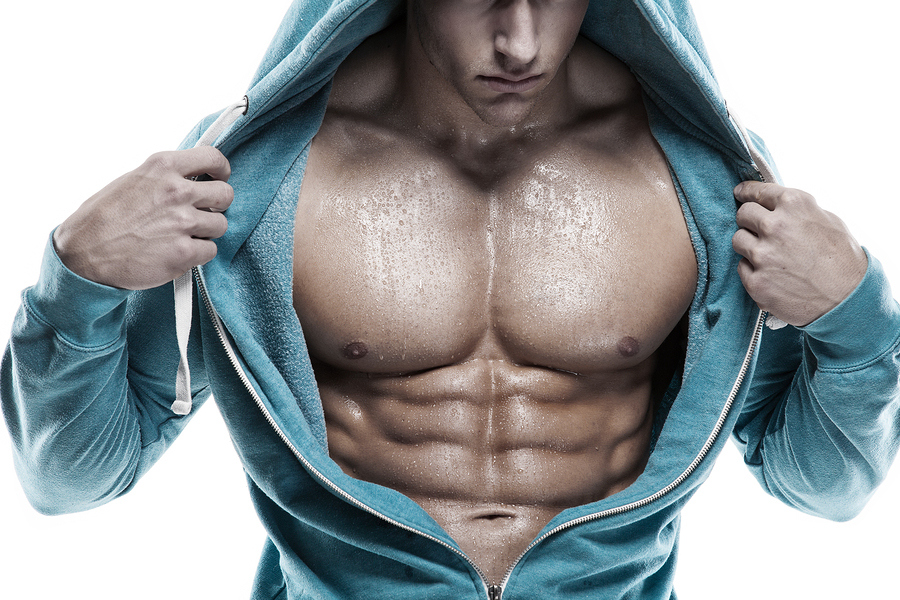I want to look like that guy.
No real man would ever say that. It’s superficial. What mature male builds their body just to look pretty?
It’s weak. Girly. Non-functional.
You should workout to be strong enough to deadlift a car. Or snatch double your bodyweight. Or throw a football across two time zones.
Lifting weights to look good naked? What a waste of time.
I read crap like that all the time. It pisses me off. It’s no longer acceptable to workout just to look better. No, everything you do must pertain to some mysterious real-world “function,” like those one-legged Bosu drills skinny trainers love to perform.
As I’m old and grumpy and generally don’t give a shit about other people’s opinions (Happy Holidays!), when someone says stuff like that I typically do the opposite. So it’s no surprise that I refuse to let anyone tell me how I “should” or shouldn’t develop my body.
I like “vanity muscle.” I think it’s cool. Bulging quads, wide backs, shoulders that blow the stitching out of cheap suits – it’s awesome.
I’d love to wake up tomorrow with 20 extra pounds of muscle on my frame – my knees might not like it, but for a little while it would be fun.
Still, give the critics their due. A muscular body can have limitations.
They aren’t necessarily strong. At least not for their size. While the weight on the bar is just a means to an end, you should never accept being weak.
They aren’t necessarily healthy. A physique can look great and still be a mess when you start running diagnostics. Or start running, period.
It can be even uglier for competitive physique athletes, although to be fair, robust health and the extreme end of any sport rarely co-exist, whether it’s powerlifting, boxing, hockey, and yes, even running. Still, you shouldn’t practice something that flat-out degrades your health.
They aren’t necessarily athletic. I’m not suggesting a bodybuilder can’t be nimble – I’m saying the training required to be a bodybuilder won’t do much to develop these athletic qualities.
A truly impressive physique has “No Holes.”
A pretty, proportioned physique is an acceptable goal. But it shouldn’t come at the neglect of something that contributes significantly to health or overall quality of life. This includes strength, mobility, low bodyfat, and aerobic endurance & anaerobic capacity, amongst other more nebulous qualities like “health.”
You don’t have to excel at everything – although God bless you if you do. The idea is to score at least a passing grade in everything while keeping your focus clearly locked on what really motivates you. In this case that’s an aesthetic physique.
So how do you target so many different qualities at once? Chase too many rabbits at once and you end up eating Ramen noodles for dinner.
You need to periodize.
Periodization is how you organize a long-term training program.
With periodization, instead of throwing the kitchen sink at your body every training program, you split it up, so different qualities are emphasized over the course of the year.
There have been many books and thousands of articles written on the subject for other strength sports like weightlifting and powerlifting, so if this is of interest you’ll find no shortage of quality material to dig into.
But what if that’s not your bag, exactly?
Say you’re not a powerlifter or a thrower or even an athlete, per se – you’re just an average dude who wants to look great naked and be healthy?
How can you periodize your training to get a well-proportioned, muscular, healthy physique?
There’s another wrinkle – being over 35.
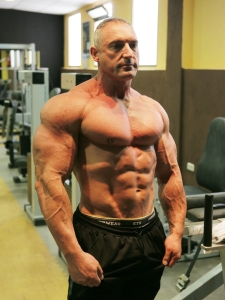
The big myth is that strength and muscle mass start decreasing after a certain age.
If you train regularly, this is simply not the case.
Truth is, it may be even easier to maintain what you’ve spent two decades building if you come from a long, active training background.
Of course, that’s if you stay healthy enough to train hard – and that’s where age tends to kick guys in the balls.
Your joints and connective tissues do not get stronger with age. On the contrary, most are already on death row thanks to the previous two decades of heavy training (including those years in college when you were a dumb ass).
For that reason, mobility and tissue work now join regular bloodwork and prostate exams as “stuff older guys must take ownership of.”
You also need to be mindful of your rest days. Some internet “fitness experts” like to brag about how hardcore not taking rest days is. Cool story bro, but that’s short-sighted thinking.
Fact is, I have never met anyone who’s actually strong or big (not internet strong or big) that didn’t take rest days seriously.
And that goes double as you push 40.
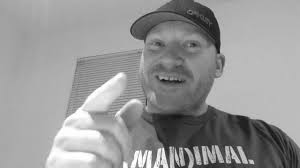
Enter Aesthetic Training for Older Guys.
This is something I put together largely for my own selfish purposes. However, judging by the questions I get, it’s safe to say there are many with similar goals.
To help with the structure, I leaned heavily on former NFL strength coach Derek Woodske, aka The Manimal. Derek’s a great coach and an entertaining writer and speaker. You can learn more about Derek here.
Businesses love to work off quarterly goals.
It also works well when setting up a periodized training program. For the needs of the older, aesthetic-minded lifter, I like to work off 4 quadrants:
• Hypertrophy
• Strength
• Fat Loss
• Something Else
While the total length is a year, the duration of each constituent phase would depend on the needs of the individual. For example, a naturally lean guy might only need an 8 week fat loss phase (or none whatsoever) while a chubbier dude may need more time there.
Typically 16 weeks would be the maximum length of any phases (without a break) and 4 weeks the minimum.
Although the order doesn’t really matter, from experience fat loss training (higher volume, lower intensity) seems to work better coming off a strength phase – perhaps due to the nervous system being tuned in or the dramatic change in paramters (low reps/high intensity to high reps/low intensity).
Or at the very least, the change makes it all feel new and exciting.
Now let’s look at each cycle in-depth and their respective goals:
Hypertrophy A – 8 weeks
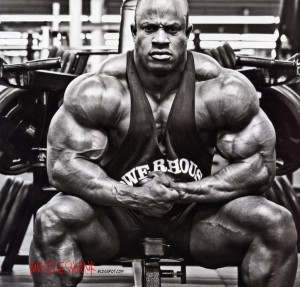
Goal: Increase Muscle Size
Weight training: 4 days per week. Multi-joint with some isolation exercises, 2-4 sets of 6-12 reps.
Anaerobic Work: Power — 1-2 sessions per week, preferably on a lower body training days.* Examples include 20-meter hill sprints with a 3:1 up to 5:1 rest: work ratio.
Aerobic Work: Steady state cardio is optional on off days.
Restorative: Daily mobility/SMR work, off day flexibility training, ensure 2 off days per week (excluding steady state cardio).
* Older athletes benefit greatly from more days off. While it’s convenient to schedule just one workout per day, doing anaerobic on a lower body weight training day (4-6 hours before or after training) can be very helpful if it frees up another day for rest.
The goal of this phase is to get bigger all around. Think, a balanced bodybuilding program with a bit of lower rep work for good measure.
Techniques like supersets and high-rep sets and other tools to extend the time under tension should only be used with the last set per exercise.
WEEK OFF – You can deload or take the week off training entirely. Soft tissue work or massage is highly recommended.
Hypertrophy B – 8 weeks — Specialization
Goal: Increase Size of Weak Bodypart
Weight training: 5 days per week. Mix of multi-joint and isolation exercises, 2-4 sets of 6-12 reps, even 15 reps or more.
Anaerobic Work: Capacity — 1-2 sessions per week, preferably on a (non-specialization) training day. This could be pushing a Prowler with a 1:2 work-rest ratio. Regardless ditch the hill sprints for now to give the nervous system a break.
Aerobic Work: Steady state cardio is optional on off days.
Restorative: Daily mobility/SMR work, off day flexibility training, ensure 2 off days per week (excluding steady state cardio).
This phase is all about attacking a predetermined weak point. Extra training days and a variety of intensity techniques like supersets, drop sets, giant sets, and rest-pauses can be used to help stimulate new growth. The key word here is pump.
Of course, an increase in work in one area must be accompanied by significant reductions everywhere else, both in volume and intensity. Exercises on non-specialization should always be performed with a rep or two left “in the hole.”
For example, a routine prioritizing shoulders might look like this:
Monday: Chest, Shoulders (2 pressing moves)
Tuesday: Back & Rear Delts
Thursday: Shoulders (super sets & giant sets, 12-15 reps)
Friday: Legs & Core
Saturday: Arms
WEEK OFF– Take the week off training entirely. Soft tissue work or massage is highly recommended.
Strength A – 12 Weeks
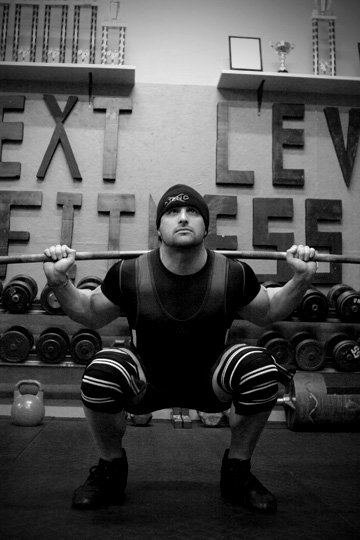
Goal: Get stronger.
Weight training: 3-4 days, multi-joint exercises, 4-8 sets of 2-5 reps excluding structural balance work.
Anaerobic Work: None.
Aerobic Work: Steady state cardio on two off days. 30 minute sessions at 70% max heart rate.
Restorative: Daily mobility/SMR work, off day flexibility training, ensure 2 off days per week (excluding steady state cardio).
My colleague Dave Tate calls this movement-based training. The focus is not on the specific muscles but getting stronger in the major movements (squat, hinge, push, pull). So choose thick presses and rows and chin-ups and deadlifts, not cable curls and pec deck flyes. You should’ve had your fill of those kind of lifts in the last phase.
In this phase anaerobic stuff like HIIT is dropped so you can channel your resources towards better recovery. To compensate for the drop in activity – and the fact that low rep work doesn’t burn as many calories – the steady state cardio is no longer optional. Just don’t turn it into a cardio contest – think restoration, not exhaustion.
Do a deload before entering Strength B.
Strength B – Max Effort — 4 Weeks
Goal: Set New PRs!
Weight training: 3-4 days, multi-joint exercises only. 4-8 sets of 1-5 reps No structural balance work or very little assistance.
Anaerobic Work: None
Aerobic Work: None. You won’t die.
Restorative: Daily mobility/SMR work, off day flexibility training, ensure 2 off days per week. Massage is highly recommended.
The volume goes down further and the intensity goes up. The next 4 weeks is about peaking your current strength phase. Slow down your training and up your focus. Growing a beard likely helps.
The obvious question is — if aesthetics is number one, why bother with strength phases?
While being able to bench press a Yugo isn’t your end goal, regular strength phases are highly beneficial:
* They get you stronger, so you can use heavier weights in hypertrophy phases and grow that much faster.
* They give the physique a slightly harder, denser “look” versus just pump training.
* It’s a radically different stimulus to hypertrophy training — so when you go back to your beloved pump work, the novel stimulus can “shock” the body into growth .
* Stronger is always better. Always.
WEEK OFF — Take the week off training entirely. Get a massage or two — you earned it.
Fat Loss – 12 Weeks
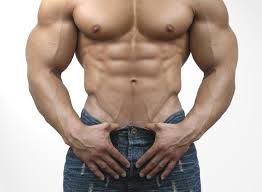
Goal: Get lean.
Weight training: 3-4 days, multi-joint and single-joint exercises, 3-4 sets of 8-15 reps, shorter rests, circuits and longer time under tension sets.
Anaerobic Work: 2 sessions per week, on lower body training days.
Aerobic Work: Steady state cardio 3-5 days per week x 20-60 minutes. No, does not have to be fasted. 😉
Restorative: Daily mobility/SMR work, off day flexibility training, ensure 2 off days per week (excluding steady state cardio).
The primary driver of fat loss is a calorie deficit.
You can lose fat while training for hypertrophy or strength. However, if a very cramped schedule poses a challenge, using lactic acid protocols (higher reps, short rest) can be helpful.
However, my preference for using these methods while dieting versus lower rep protocols is efficiency. An older lifter will be hard pressed to hit a PR while on low calories, so why try to? Recuperative abilities are also greatly reduced on a lower calorie diet, making heavy training even less sustainable.
Add in the negatively affected sleep patterns that come with dieting (due to low calories and higher cortisol levels) and attacking a bunch of neurologically demanding training is simply counterproductive.
That said, you still need tension to “tell” the body to not burn muscle during the diet — doing just one exercise per workout for lower reps and higher intensity can accomplish this.
WEEK OFF – Take the week off training entirely. Soft tissue work or massage is highly recommended.
Other Stuff – 4 weeks
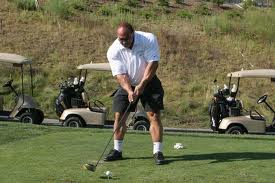
Goal: Do something else
Weight training: Not unless it’s a new activity (Olympic lifting, CrossFit)
Anaerobic Work: Try a new sport.
Aerobic Work: Walk or ride a bike to venue where you play said new sport.
Restorative: Daily mobility work, off day flexibility training. Ideally something new (yoga perhaps?)
Even an athlete can’t train hard all year.
And to quote Louis C.K., “You’re not an athlete.”
While I included breaks every 12 weeks or so, you should still have a short block per training year where you don’t train for any goal other than learning something new or just having fun.
This can be a great time to learn a new skill or try a new sport. Ideally you’ll discover something that you stick with and perform all year.
Or try out new gyms. Do something “goofy.” Better yet, skip the gym entirely and go on a long vacation. Walk around and take pictures like a tourist, the type that doesn’t plan travelling around finding the closest fitness centre.
This not only offers a physical break from the wear of the last training year, it’s incredibly freeing to just exercise for the joy of doing it. Chasing your training log, while the best way to train, isn’t always the best way to live.
As always, balance yo.
Here’s to training time well spent.
See you in front of the mirror.
Personalize Your Plan?
Some guys just want to look good. Others are willing to ask for help to look their best. Which guy are you? Click here to learn how you can finally build body you want.

